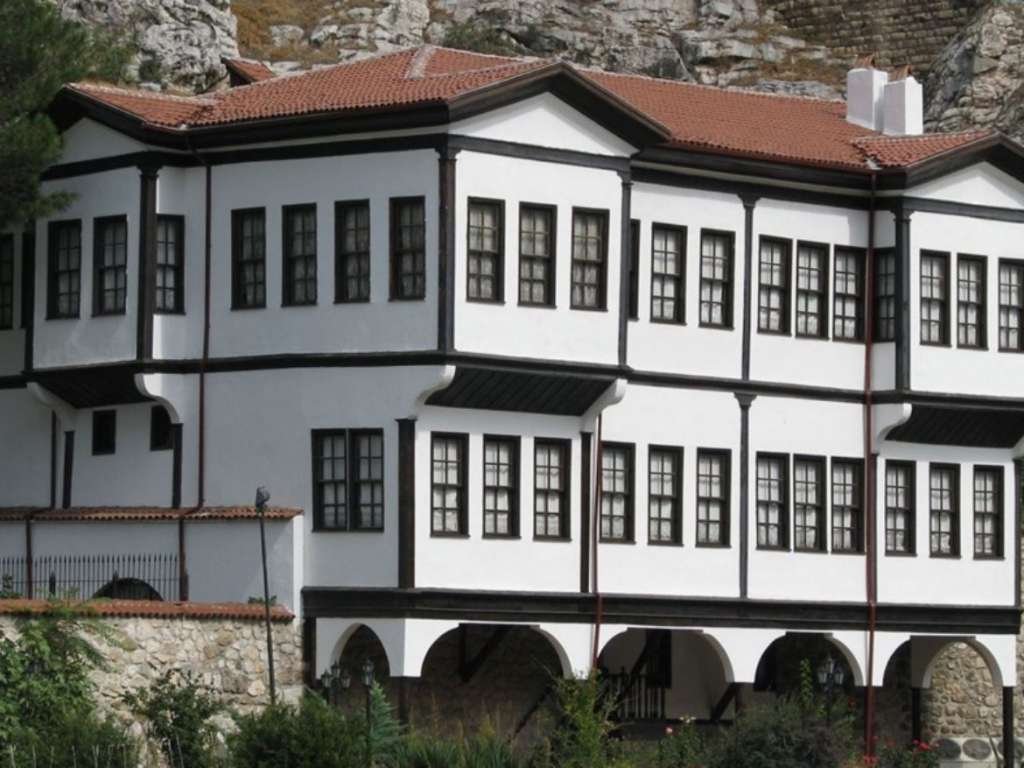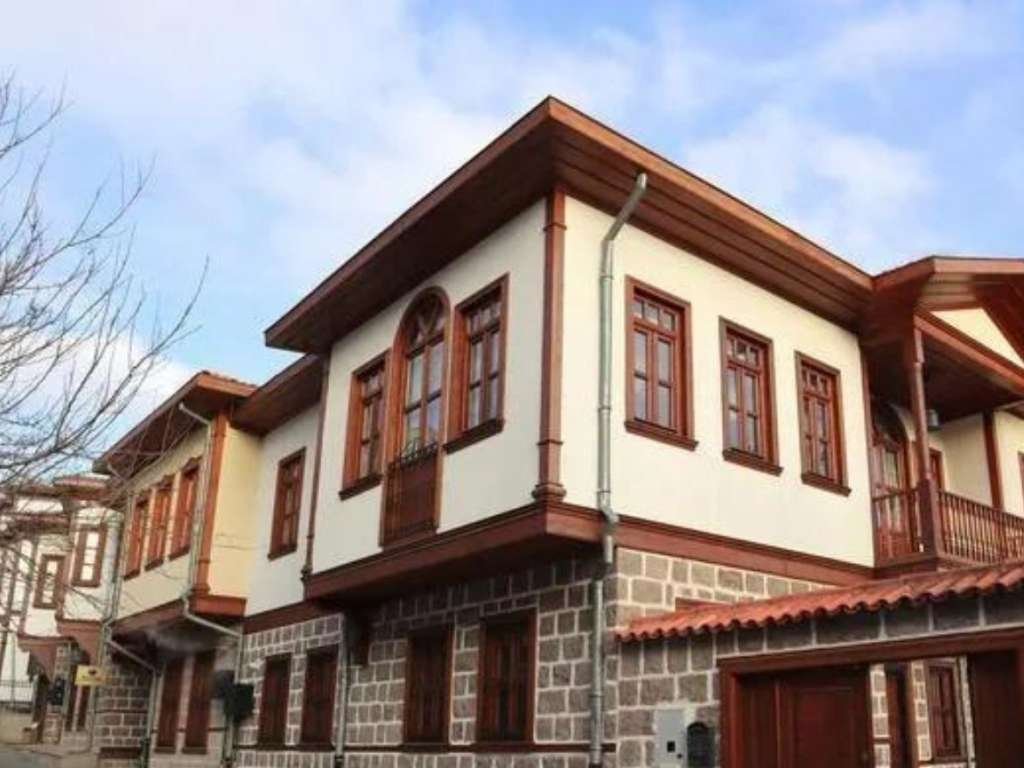In the heart of Turkey’s rich cultural tapestry, traditional Turkish houses stand as timeless testaments to the nation’s architectural heritage. These dwellings, more than mere structures, are living narratives woven into the urban fabric, telling tales of a past that gracefully merges with modernity. As we step through the ornately carved doors of these historic abodes, we uncover a world where every stone and carved woodwork whispers stories of yesteryears, yet resonates with contemporary relevance. In this blog, we will embark on a journey through the winding lanes of history, exploring how traditional Turkish houses continue to inspire and shape modern living spaces. Join us as we delve into the legacy of these architectural marvels, where the past and present dance in harmonious synchrony.

What Are the Historical Origins of Traditional Turkish Houses?
The historical origins of traditional Turkish houses are as diverse and rich as the cultural mosaic of Turkey itself. Rooted in the profound depths of Anatolian history and influenced by various civilizations that flourished in the region, these houses present a unique architectural legacy. The types of Turkish houses vary significantly from region to region, each reflecting the local climate, culture, and resources available.
In the Aegean and Mediterranean regions, you’ll find stone houses with thick walls and small windows, designed to keep the heat out. The iconic houses of Safranbolu, a UNESCO World Heritage site, showcase the quintessential Ottoman architectural style with their elegant bay windows and intricately designed interiors.
The Eastern Anatolian houses, meanwhile, are often made of wood and mud-brick, featuring flat roofs to withstand heavy snowfall. These homes are known for their functional simplicity and robustness against harsh weather conditions.
In urban centers like Istanbul, the confluence of Byzantine, Ottoman, and Western influences is evident in the eclectic mix of traditional Turkish houses. From the grand wooden mansions along the Bosphorus to the humble abodes in the old quarters, each type of house tells a story of the cultural and historical layers that have shaped Turkey’s urban landscape.
This rich architectural tapestry not only reflects the historical origins of traditional Turkish houses but also demonstrates the adaptability and ingenuity of Turkish people in creating homes that are both beautiful and practical, deeply rooted in their historical and cultural context.

How Do Traditional Turkish Houses Integrate Modern Design?
In the realm of architecture, the integration of modern design into Turkish traditional houses presents a fascinating study in blending the old with the new. Turkish traditional houses, known for their distinct characteristics such as ornate wooden carvings, colorful tiles, and spacious courtyards, are now experiencing a renaissance with the infusion of contemporary design elements. Architects and designers are ingeniously incorporating modern amenities and minimalist aesthetics while preserving the soul and authenticity of these historic structures. This fusion is most evident in urban renovations, where the exterior façades maintain their historic charm, while interiors boast modern comforts and sleek designs. The use of large glass windows, for instance, has become a popular way to bring natural light into these traditionally dim homes, enhancing both their functionality and aesthetic appeal.
Moreover, sustainable practices are increasingly integrated into the renovation of Turkish traditional houses, marrying the age-old wisdom of environmentally friendly materials with modern green technologies. Innovations such as solar panels, energy-efficient appliances, and eco-friendly insulation are being used to update these historic homes for the 21st century. This approach not only preserves the cultural heritage embedded in these buildings but also makes them more livable and energy-efficient for modern residents. The result is a beautiful coexistence of tradition and modernity, where each element complements the other, creating living spaces that are both historically rich and comfortably contemporary.

What Craftsmanship Defines Traditional Turkish Houses?
The craftsmanship in a typical Turkish house is a testament to the rich artisanal heritage of Turkey, reflecting a deep-rooted tradition of skilled workmanship and artistic expression. One of the most striking features is the intricate woodwork, which can be seen in the finely carved ceilings, elaborate window frames, and ornate doors that adorn these homes. This woodwork, often crafted from local timbers like oak, pine, or walnut, is not just a decorative element; it also illustrates the ingenuity of Turkish carpenters in creating structures that are both durable and aesthetically pleasing. Another hallmark of traditional Turkish houses is the use of colorful tiles and ceramics, particularly in the interiors.
In addition to woodwork and ceramics, stonework is another critical aspect of the craftsmanship in a typical Turkish house. Especially in regions with abundant stone resources, houses display expert masonry, with stone used not only for structural purposes but also for creating detailed designs and inscriptions. Furthermore, the layout and design of traditional Turkish houses are deeply influenced by cultural and social customs. Features like courtyards, which serve as the heart of the home, and ‘eyvans’ or semi-open rooms, reflect the Turkish emphasis on family life and hospitality.

How Are Today’s Traditional Turkish Home Preserving Cultural Heritage?
Today’s traditional Turkish home architecture is a vibrant embodiment of cultural preservation, seamlessly blending historic elements with modern living. The use of classic materials like wood and stone, along with ornate carvings and ceramic tiles, maintains the aesthetic charm of ancient Turkish design. Contemporary renovations often include modern amenities while respecting the original layout and style, thus keeping the cultural narrative alive. These homes frequently feature courtyards and open terraces, integral to traditional Turkish social life, now adapted for contemporary use. Environmentally sustainable practices are increasingly incorporated, reflecting a commitment to preserving both cultural and natural heritage. Through these methods, Turkish home architecture today continues to honor and keep alive its rich historical and cultural roots.
How Have Traditional Turkish Houses Shaped Contemporary Home Designs?
Traditional Turkish houses have significantly influenced contemporary home designs, infusing modern architecture with a sense of historical depth and cultural richness. Their emphasis on courtyards and open communal spaces has inspired the design of modern homes that prioritize social interaction and outdoor living. The use of ornate woodwork and intricate tile patterns from these houses has been adapted into contemporary design, adding aesthetic and cultural value. Modern architects often integrate the harmonious balance of light and space seen in traditional Turkish homes, creating environments that are both functional and spiritually uplifting. Overall, the legacy of traditional Turkish houses continues to shape and enrich contemporary home designs, blending past and present in a unique architectural synthesis.
Click to see the houses with Turkish architectural style and aesthetics!


